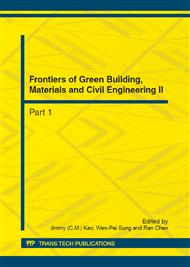p.976
p.980
p.984
p.989
p.995
p.1001
p.1005
p.1010
p.1014
The Forecasting for Artificial Frozen Soil Temperature Field Based on Support Vector Machines Method
Abstract:
The level of soil freezing temperature has a direct impact on the time of formatting effective frozen wall and the value of freeze wall thickness, and it has a certain relationship with the soil composition, moisture content, density, liquid limit moisture content, pressure and saltness .For the feature of less measured sample of new mines, using the theory that is based on structural risk minimization and the method of small sample study-Support Vector Machine Algorithm, the support vector machine computation model of artificial frozen soil temperature has been established. Using support vector machines of different kernel functions to analyze the frozen temperature calculation of artificial freezing soil, the kernel function that is fit for the frozen temperature calculation of artificial has been determined. The results of support vector machine calculation model shows that this method is an effective method, it has provide a new approach for the frozen temperature calculation of artificial freezing soil.
Info:
Periodical:
Pages:
995-1000
Citation:
Online since:
August 2012
Authors:
Price:
Сopyright:
© 2012 Trans Tech Publications Ltd. All Rights Reserved
Share:
Citation:


